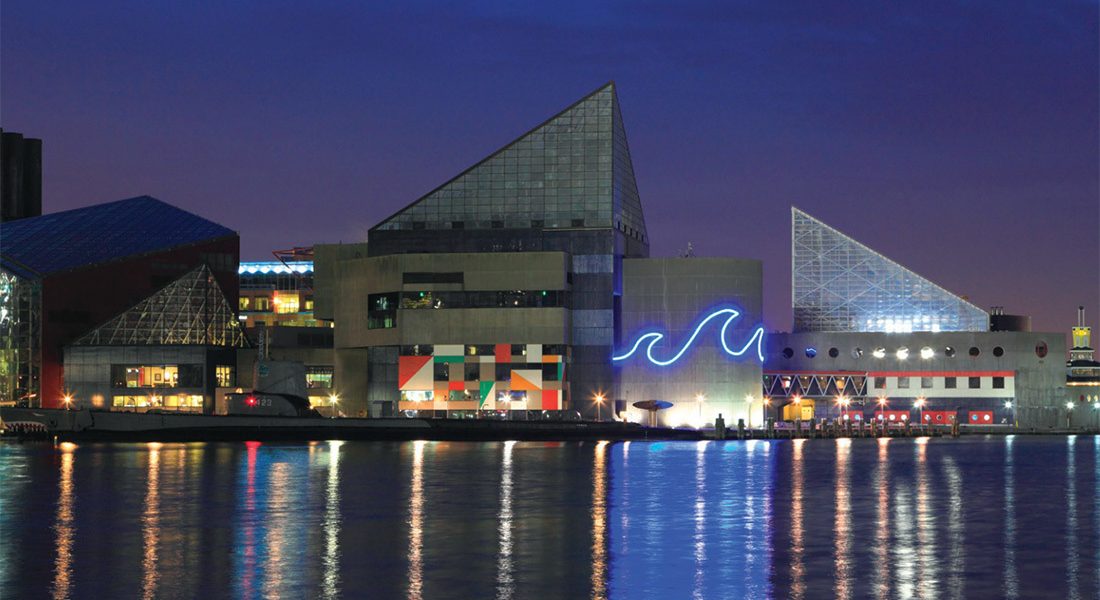News & Community
As the National Aquarium Turns 35, Focus Shifts From Captivity to Conservation
The Inner Harbor tourist attraction aims to be more educational than ever.
William Donald Schaefer stood at the edge of the National Aquarium’s 70,000-gallon seal pool and looked out at the reporters and spectators surrounding the tank. It was July 1981, and the Aquarium was a month behind schedule. The project was a $21.5-million risk, but it was a risk Schaefer knew he needed to take to help revive his city, struggling beneath the weight of empty row houses, unemployment, and high crime. As part of his Inner Harbor project, he believed the Aquarium would help restore Baltimore’s image and faltering economy, and he was willing to swim with the seals to prove it.
Wearing a striped Victorian-era swimsuit and straw hat, Schaefer took a 15-minute splash with a gray seal named Ike and a young model dressed as a mermaid. Onlookers laughed and cheered and, less than a month later, the Aquarium opened its doors on August 8, 1981, beginning the next phase of Baltimore’s urban revitalization.
As the National Aquarium celebrates its 35th anniversary this week, it’s standing on the edge again. As the interests and opinions of its visitors continue to shift away from aging point-and-look exhibits and traditional captivity methods, the Aquarium must follow the example of its original champion and commit to evolving as the city does.
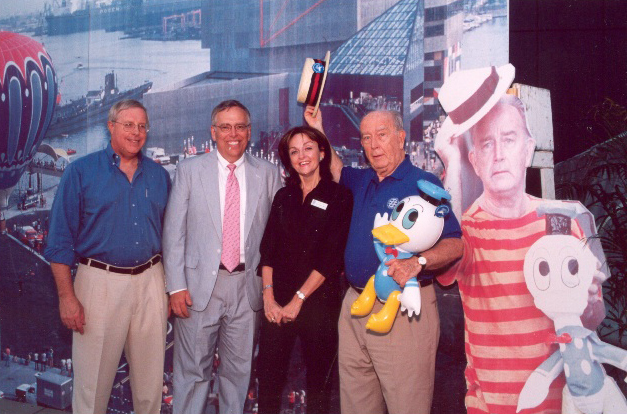
When the 81-year-old National Aquarium closed in Washington D.C. in 2013, the Baltimore location snapped into action. It consolidated its animal collections and employees, redefined the future of the Aquarium, and mapped out the necessary steps to ensure it remained relevant to a changing audience.
“As the reality of the health of the world’s oceans came into sharper focus in recent decades, the Aquarium recognized and embraced the role it could play in motivating people to act on behalf of our planet’s well-being,” says Dale Schmidt, the Aquariums’ executive vice president and COO. “We have focused our efforts on conservation, which has led to the development of a comprehensive plan, and, so far, the reaction by our visitors and partners have been very supportive.”
With the help of a design firm and intelligence company, the Aquarium devised a plan to help it evolve from a tourist attraction with preservation projects into a full-fledged conservation program. Three major projects have been given first priority: creating a waterfront campus, building an off-site animal care and rescue center, and constructing North America’s first seaside dolphin sanctuary.
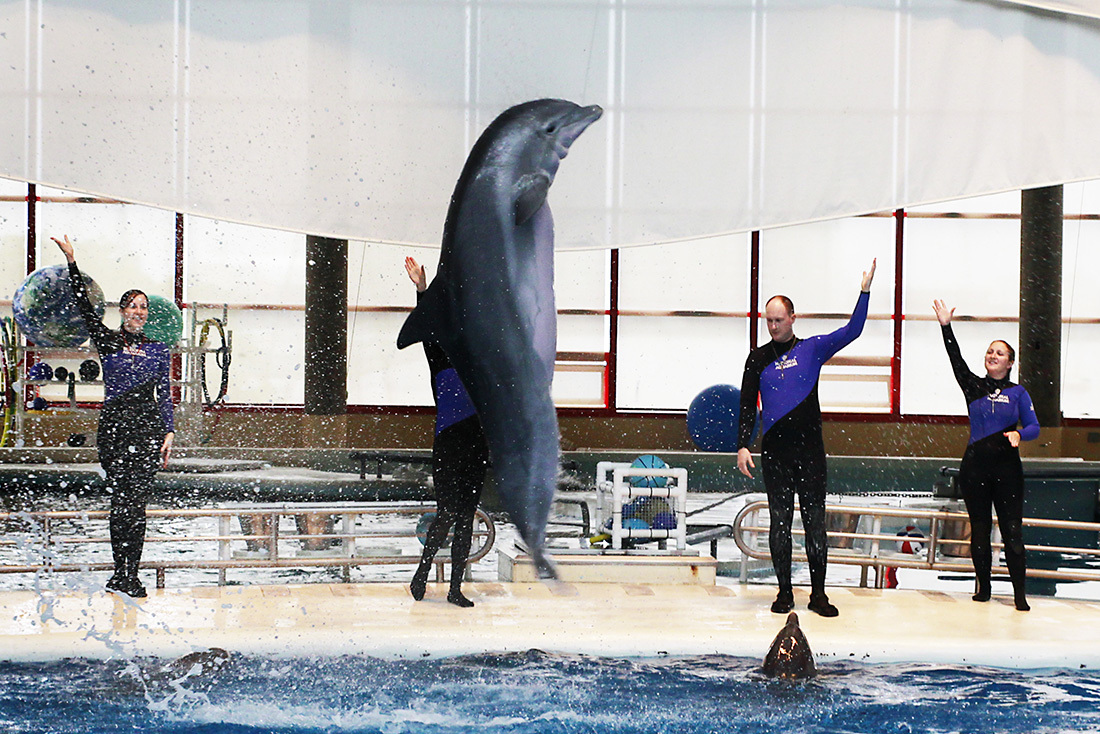
No one is more eager for change than the eight Atlantic bottlenose dolphins swimming circles in the Marine Mammal Pavilion. For more than 20 years, they had jumped, spun, and whistled for audiences up to seven times a day, before the death of two baby dolphins in 2011 and visitors’ increased discomfort with animal captivity spurred the cancellation of the dolphin shows.
Overnight, the 1,300-seat pavilion transformed from a theater into an educational exhibit, where guests can visit and interact with the dolphins. In June of this year, the Aquarium announced that it plans to build an outdoor, seawater facility for the dolphins by the end of 2020. But until a site location is chosen, purchased, constructed, and the animals are relocated and retrained to live in an ocean-like environment, they will continue to wait in their 1.2 million gallon tank overlooking the Inner Harbor.
Walking through the Aquarium, evidence of the evolution is apparent in every corner. In 2012, the Wings in the Water exhibit, which was housed in the center of the original building for 32 years, was given a $12.5-million renovation and transformed into a replica of an Indo-Pacific coral reef, full of sting rays, sharks, and other larger fish. More recently, the third floor was gutted to create the Living Seashore exhibit, where visitors can experience the sights and sounds of the Mid-Atlantic shoreline.
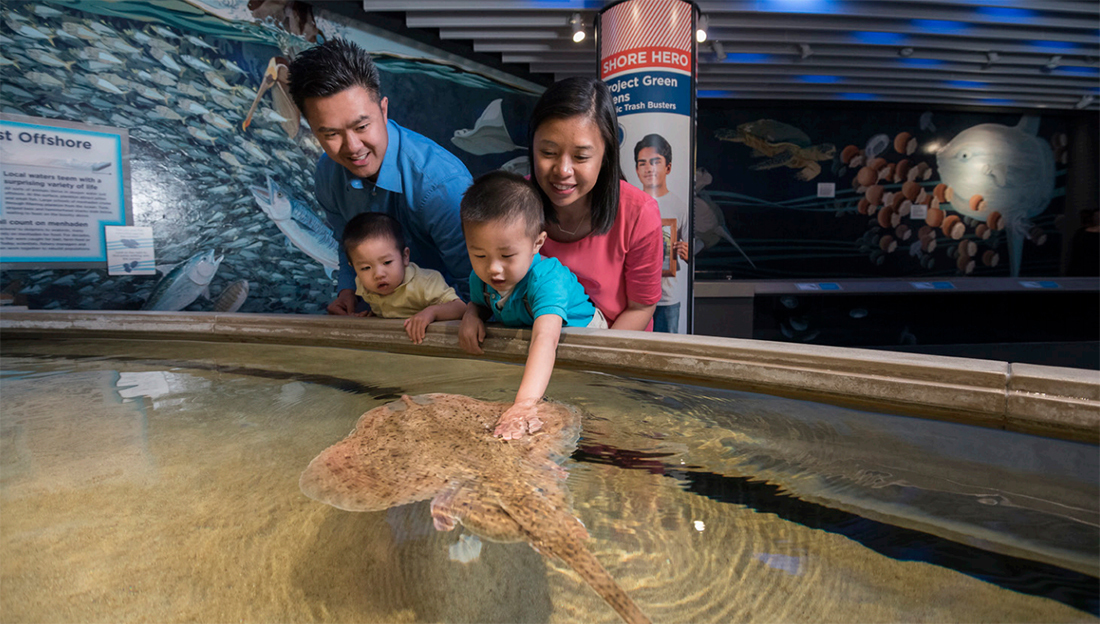
Kate Rowe, director of media relations for the National Aquarium, says the Aquarium strives to give visitors an experience they can take home.
“You can read things, like some of our exhibits have placards with the animal’s Latin name, and a bit of information, but not everyone understands or takes anything away from that,” Rowe says. “Seeing, smelling, and touch makes it a whole other level of learning.”
Over the past five years, the Aquarium recognized a shift away from ogling at animals behind Plexiglas to engaging in the animals’ daily routines. To accommodate, they added activities like feedings and cleanings to the exhibits, which offer guests opportunities to observe every aspect of the animals’ day-to-day life.
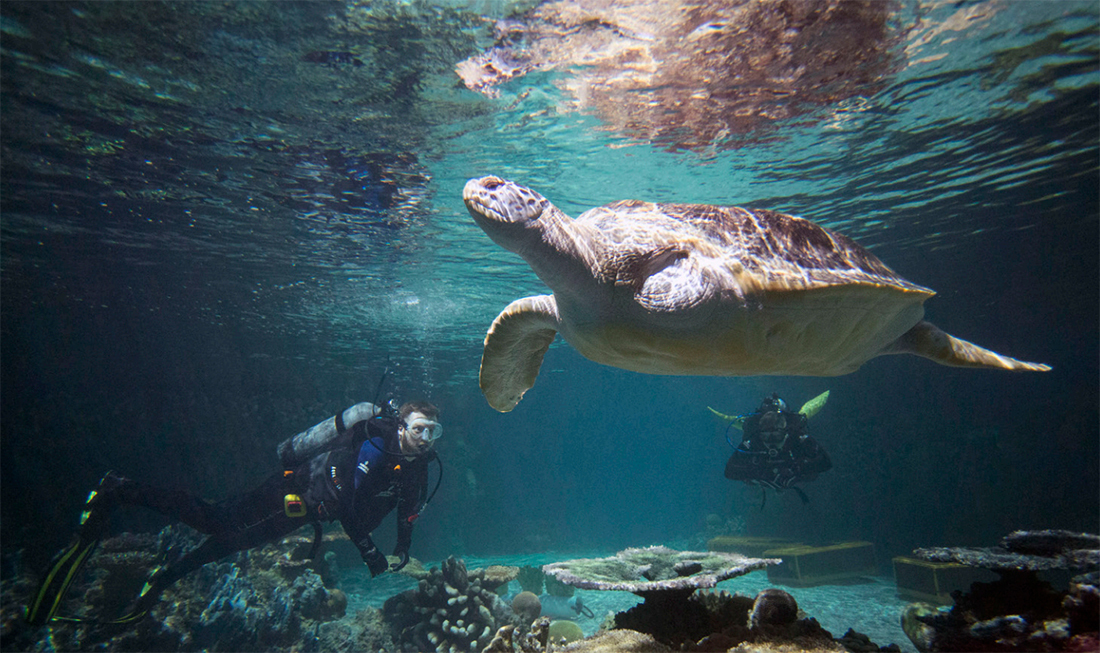
In July, the Aquarium held more than 40 scheduled animal-to-visitor connections each day, which didn’t include daily feedings or other spontaneous interactions. According to Rowe, bringing the behind-the-scenes work to the floor has allowed Aquarium staff members to share their work directly with guests.
“The original thought was that it needed to be beautiful for when people visit,” she says. “But now, it’s so much more of an experience to see how we do it, when we do it, why we do it.”
“I like representing Baltimore in a way,” says Susan Magri, charter volunteer and exhibit guide for the last 35 years. “If I can give a visitor a good experience, hopefully they will tell other people that they had a positive time here in Baltimore.”
The Aquarium drew 1.34 million people in 2012, marking the first increase in visitor attendance since 2006. Six months after the opening of the award-winning Blacktip Reef exhibit, the Aquarium reported a 2.4 percent increase due to the amount of people lined up to see honeycomb stingrays and a rescued three-finned sea turtle named Calypso. In June of this year, The Aquarium announced that it’s on track to increase 7 percent above projections of about 1.3 million visitors.
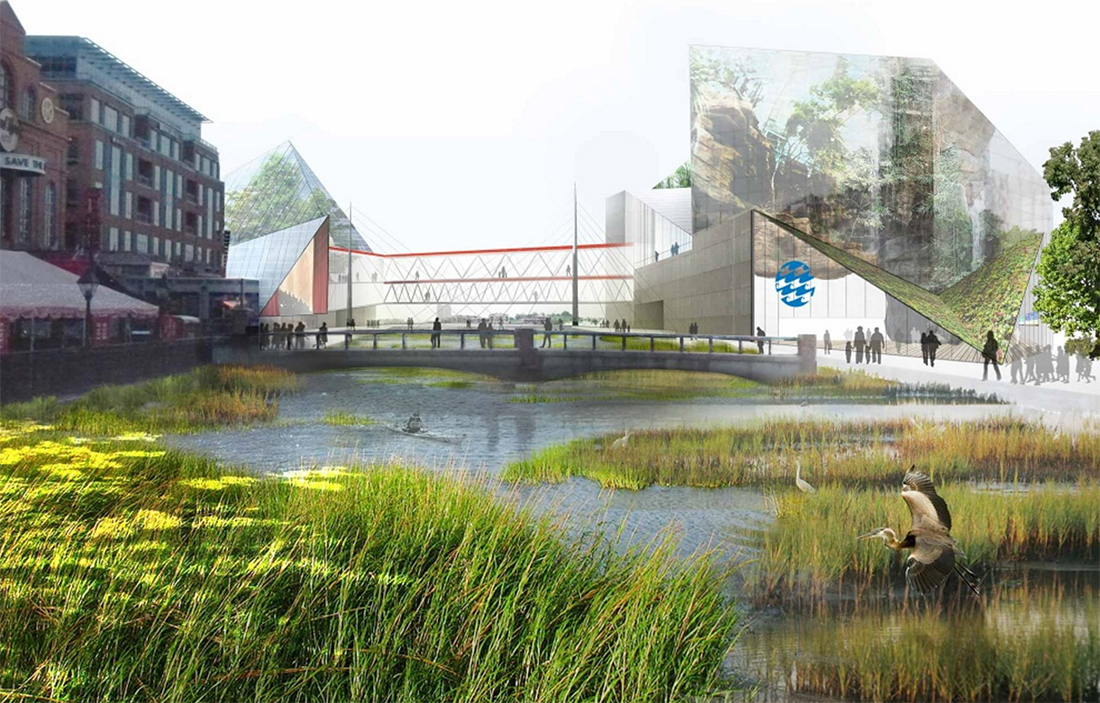
The Aquarium still has work to do, as the interior layout begs for a change, and the additions of the Marine Mammal Pavilion and Australia: Wild Extremes exhibit have created enough of a traffic flow problem that a committee of volunteers is strategically stationed to help visitors navigate through the building. Jeanne Gang, the architect leading the redesign of the National Aquarium, has recommended relocating the entrance and realigning the escalators to help visitors move through the facility more easily, but restructuring the interior of the Aquarium is not on the immediate to-do list.
Even with a list of changes to be made, one glimpse at the mockup plans for the Inner Harbor 2.0 or the Blacktip Reef exhibit shows how far the Aquarium has come and where it wants to go. It also continues to modernize outside of its walls, through a growing social media presence with daily Instagram posts, Facebook comment contests, and regular video uploads to YouTube.
“The evolution of our offerings and the evolution of our guests have given us the opportunity to see that people want to learn,” Rowe says, “and they want so much more than to just see a tank of beautiful fish.”
